As promised, some American SPAD XIII skins. All of the pilots in these skins were aces, and decorated pilots as well. It being Memorial Day weekend here in the USA, I wanted to honor these men. I think we sometimes forget that in our sim world these were real flesh and blood men, who actually lived the dangers and missions we simulate. So, I thought I would post some of their award citations here along with their aircraft skins to honor their memory.
First up, 2 Lt. Frank Luke of the 27th Aero Squadron. Luke was known as the "Arizona Balloon Buster". Between September 12 and September 29, 1918, Luke was credited with shooting down 14 German balloons and four airplanes. He achieved these 18 victories during just 10 sorties in eight days, a feat unsurpassed by any pilot in World War I. Frank Luke was awarded the Medal of Honor posthumously, and was also awarded two Distinguished Service Crosses for actions in combat. His Medal of Honor Citation reads: "After having previously destroyed a number of enemy aircraft within 17 days he voluntarily started on a patrol after German observation balloons. Though pursued by 8 German planes which were protecting the enemy balloon line, he unhesitatingly attacked and shot down in flames 3 German balloons, being himself under heavy fire from ground batteries and the hostile planes. Severely wounded, he descended to within 50 meters of the ground and flying at this low altitude near the town of Murvaux opened fire upon enemy troops, killing 6 and wounding as many more. Forced to make a landing and surrounded on all sides by the enemy, who called upon him to surrender, he drew his automatic pistol and defended himself gallantly until he fell dead from a wound in the chest."
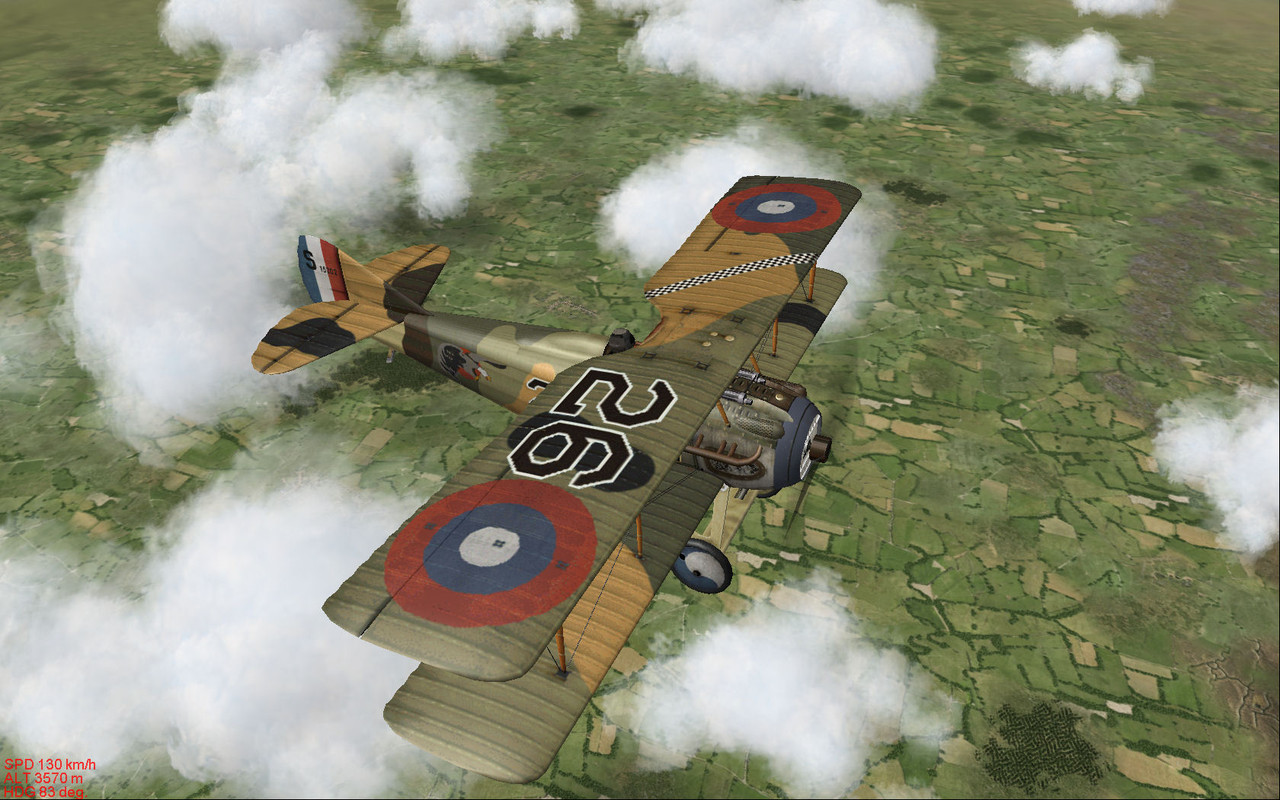
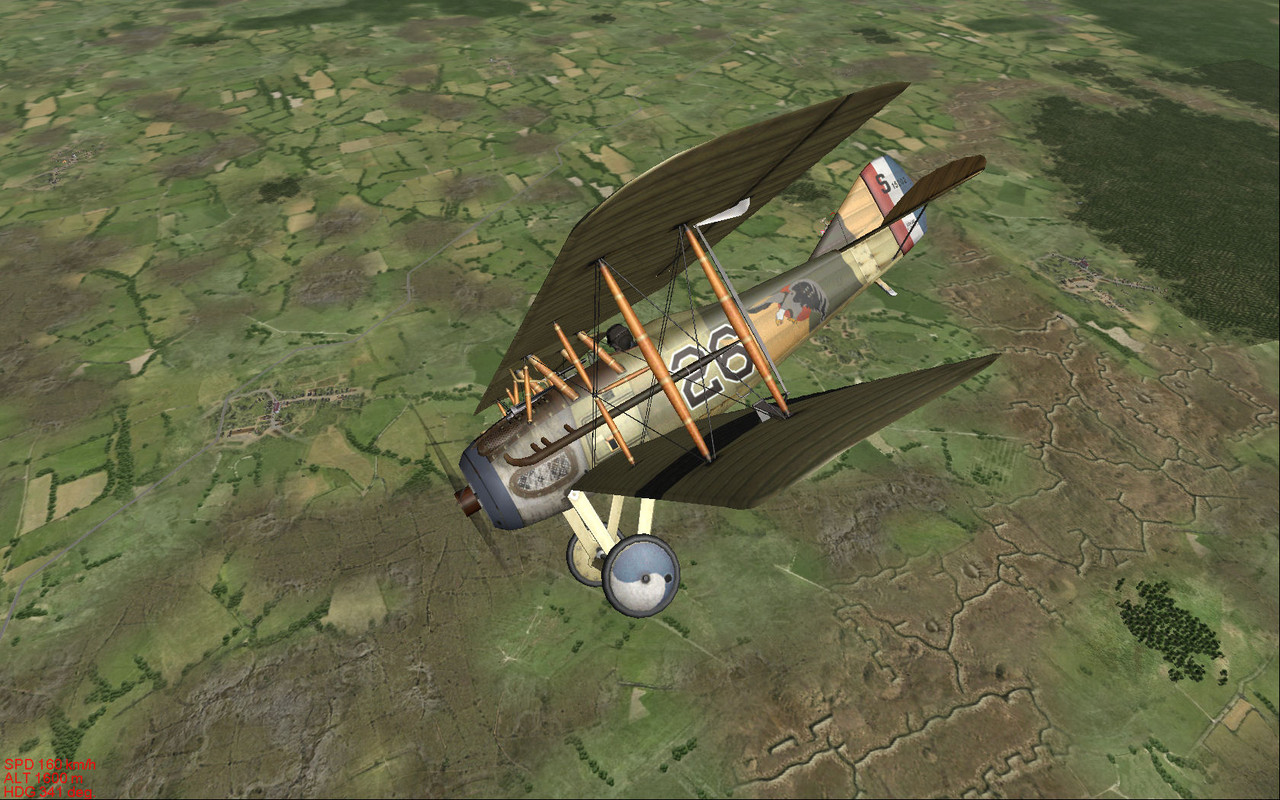
Next is a skin of Capt. Frank O'Driscoll Hunter, of the 103rd Aero Squadron. Hunter was from my own home state of Georgia, and In May 1918 on his first combat patrol, Hunter downed two German planes and landed safely despite being wounded. By the end of the war he had nine German planes to his credit. He was awarded the Distinguished Service Cross with four oak leaf clusters, more than any person other than Eddie Rickenbacker who received six oak leaf clusters to the DSC. His achievements in aerial combat also earned him the French Croix de Guerre with palm. He left the Army for a short time after the war, but returned with a commission in the Regular Army Air Service in 1920. In World War II he served as commanding general of the VIII Fighter Command and, later, the First Air Force.
Lieutenant Frank Hunter of the American Expeditionary Forces Air Service in World War I received five Distinguished Service Cross citations:
"Frank O'D. Hunter, First Lieutenant, Air Service, pilot, 103d Aero Squadron. For extraordinary heroism in action in the region of Ypres, Belgium, June 2, 1918. Lieut. Hunter, while on patrol, alone attacked two enemy biplanes, destroying one and forcing the other to retire. In the course of the combat he was wounded in the forehead. Despite his injuries he succeeded in returning his damaged plane to his own aerodrome.
"A bronze oak leaf, to be worn with the Distinguished Service Cross, for extraordinary heroism in action in the region of Champey, France, September 13, 1918. He, accompanied by one other mono-place plane, attacked an enemy patrol of six planes. Despite numerical superiority and in a decisive combat, he destroyed one enemy plane and, with the aid of his companion, forced the others within their own lines.
"A second bronze oak leaf, for extraordinary heroism in action near Verneville, France, September 17, 1918. Leading a patrol of three planes, he attacked an enemy formation of eight planes. Although out-numbered, they succeeded in bringing down four of the enemy. Lieut. Hunter accounted for two of these."
"A third bronze oak leaf, for extraordinary heroism in action in the region of Liny-devant-Dun, France. While separated from his patrol he observed an allied patrol of seven planes (Breguets) hard pressed by enemy formation of 10 planes (Fokker type). He attacked two of the enemy that were harassing a single Breguet and in a decisive fight destroyed one of them. Meanwhile five enemy planes approached and concentrated their fire upon him. Undaunted by their superiority, he attacked and brought down a second plane."
"A fourth bronze oak leaf, for extraordinary heroism in action in the region of Bantheville, France. While on patrol he encountered an enemy formation of six monoplanes. He immediately attacked and destroyed one enemy plane and forced the others to disperse in confusion."
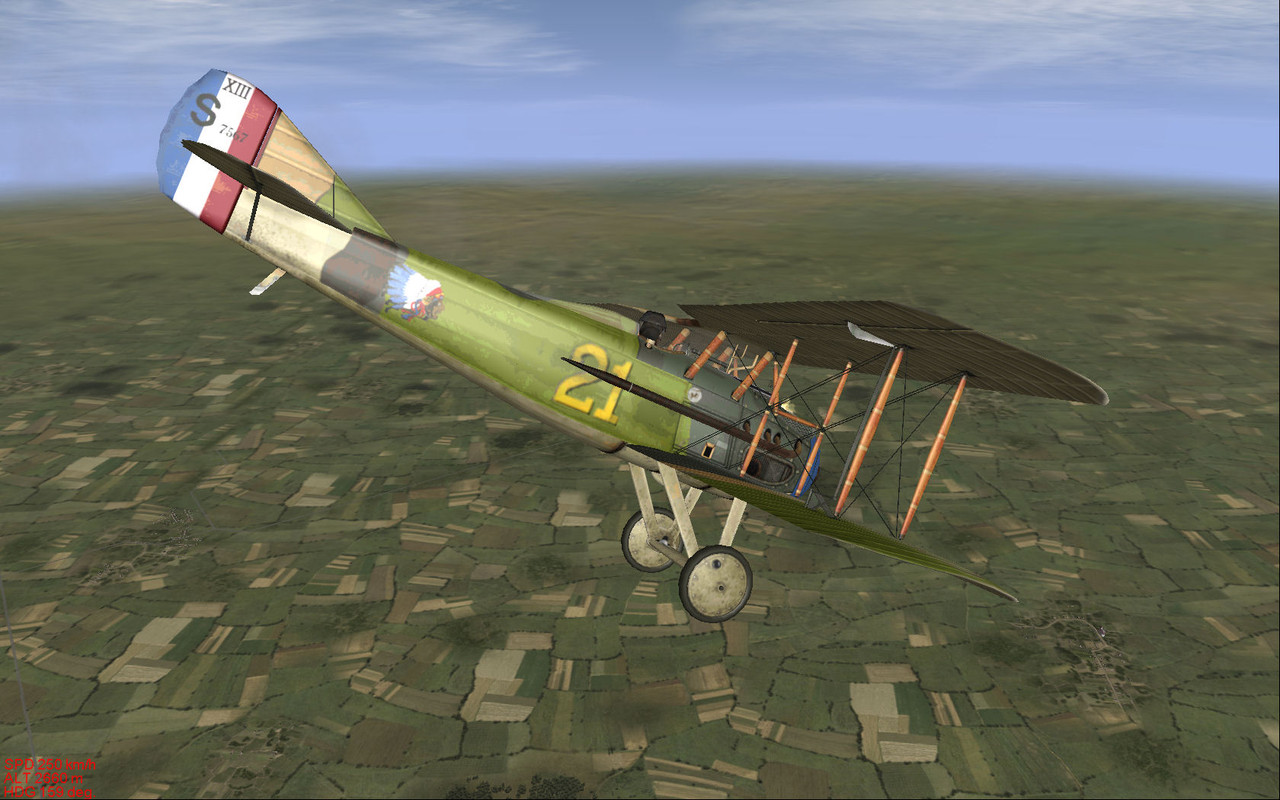
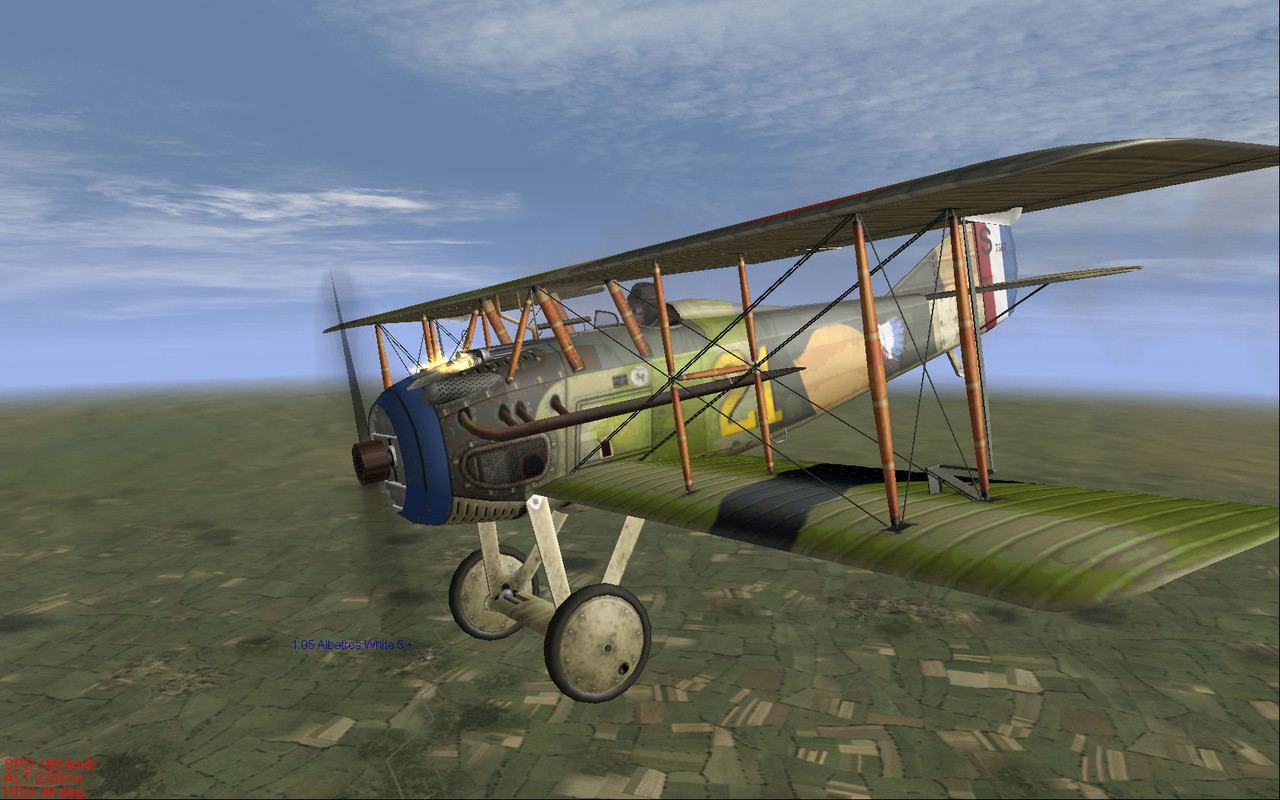
Next up is the skin of MAYER III, the SPAD XIII of Lt. Jacque Swaab, of the 22nd Aero Squadron. Ten confirmed victories made him the top scoring ace of the 22nd Aero; his seven unconfirmed claims, if verified, would have made him one of the leading American aces of the war.
In 1938, Swaab served as technical advisor on the film The Dawn Patrol, starring Errol Flynn and David Niven.Swaab died in Los Angeles on 7 July 1963 and is buried in Arlington National Cemetery.
His DSC citation reads: "This Distinguished Service Cross is presented to Jacques M. Swaab, First Lieutenant (Air Service), U.S. Army, for extraordinary heroism in action near Montfaucon, France, September 28, 1918, and in the region of Champignuelle, October 27, 1918. On September 28 Lieutenant Swaab, although himself pursued by two enemy planes, perceiving one of his comrades in distress and in danger of being shot down, dived upon the enemy plane which was directly behind that of his comrade and shot the enemy plane out of control, forcing it to withdraw. His prompt act in going to the assistance of his comrade enabled the latter to escape. On October 27 Lieutenant Swaab and another member of his group engaged in combat with seven enemy planes. In this encounter, although outnumbered, Lieutenant Swaab continued in his attack and succeeded in shooting down an enemy D. F. W. observation plane."
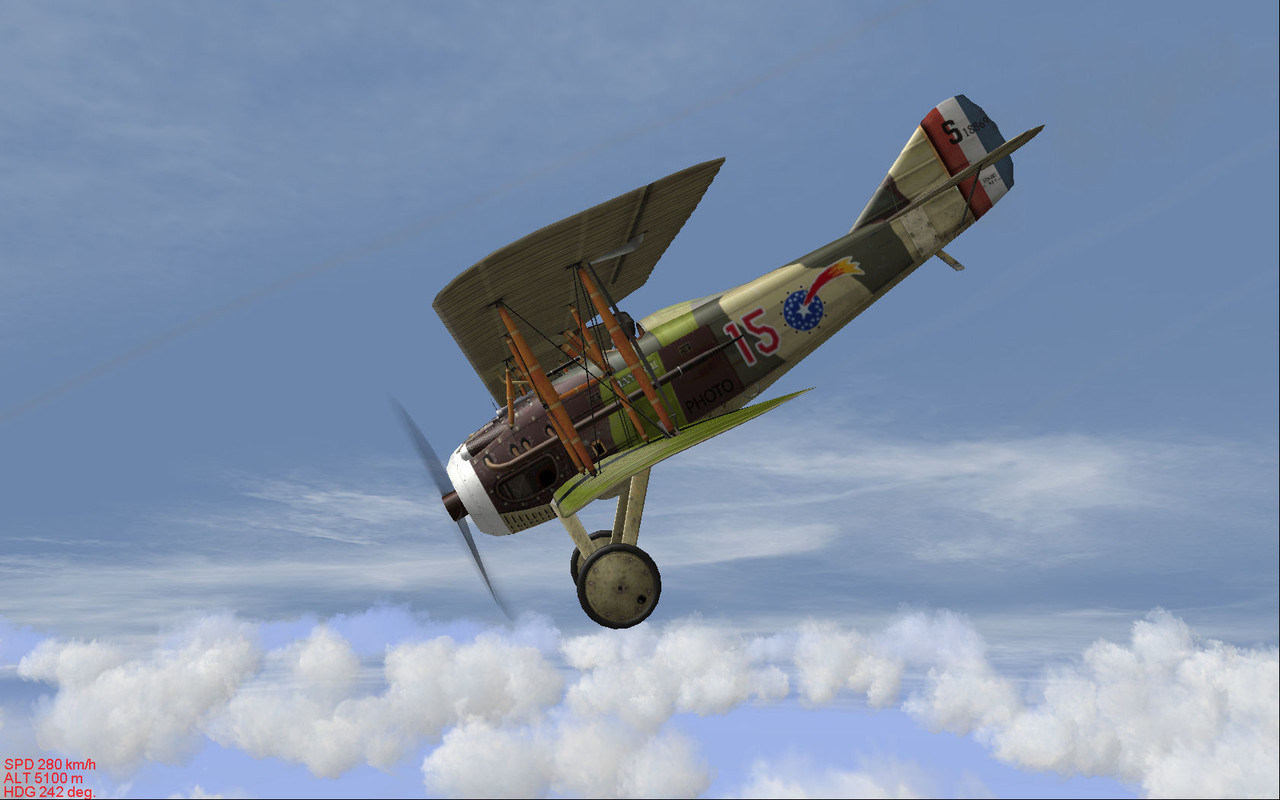
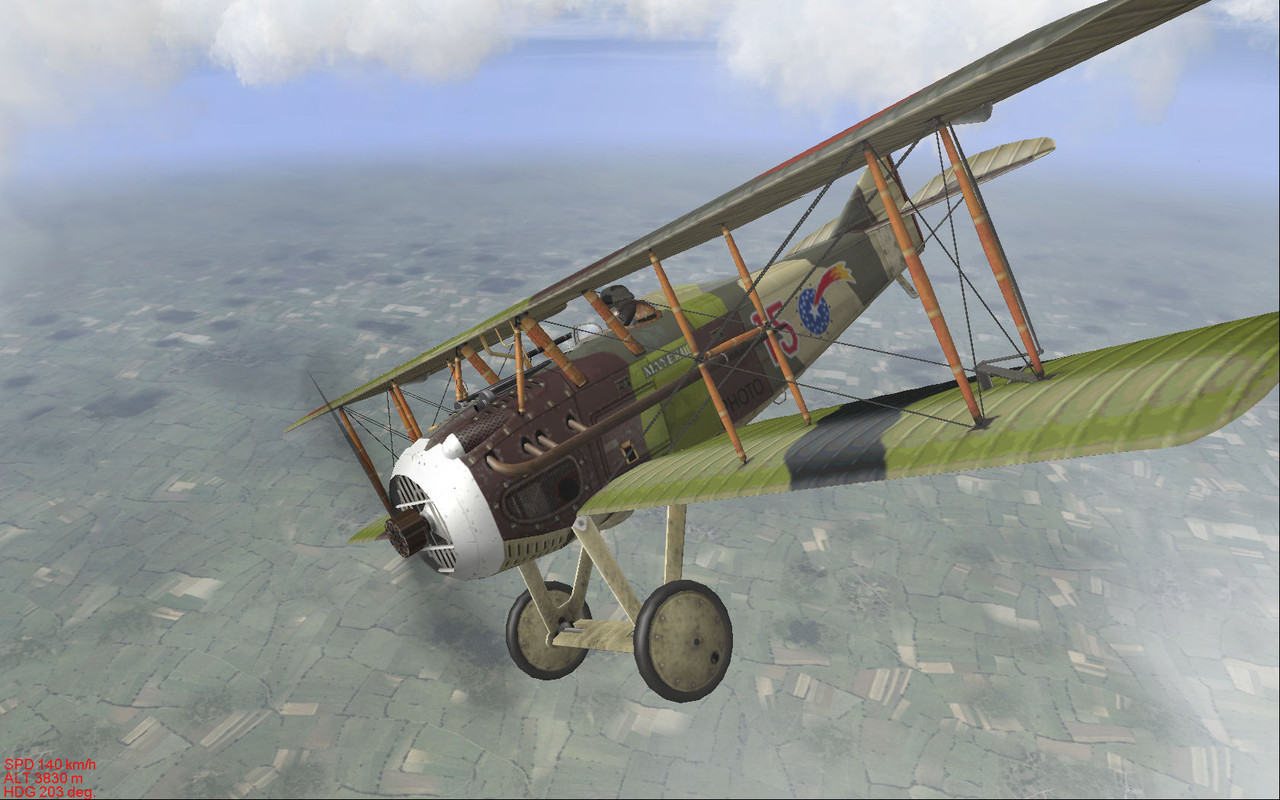
Finally there is the SPAD XIII skin of Capt. Charles Biddle, 13th Aero Squadron. Biddle joined the Lafayette Flying Corps in France on 8 April 1917. He was assigned to Escadrille 73, where after several indecisive combats with a Spad VII he scored a victory flying a SPAD XIII. Biddle transferred to the American 103d Aero Squadron on 10 January 1918 and was commissioned as a captain in the Aviation Section of the U.S. Army Signal Corps on 12 January 1918. Again flying the Spad VII he scored a victory over a Halberstadt CL.II. He then moved on to the 13th Aero Squadron (nicknamed "The Devil's Own Grim Reapers") where he achieved five more aerial victories, most of them in the SPAD XIII, giving him a total of seven confirmed. At one point he was entrusted with a SPAD XII, featuring a 37mm cannon along with its standard single machine gun armament. He was the only American pilot to actually fly a SPAD XII in combat.
In recognition of his service, the French awarded him both the Legion of Honor and the Croix de Guerre, and he received the American Distinguished Service Cross and the Belgian Order of Leopold II.
His citations read:
Distinguished Service Cross (DSC) citation
"The Distinguished Service Cross is presented to Charles John Biddle, Captain (Air Service), U.S. Army, for extraordinary heroism in action in the region of Damvillers, France, September 26, 1918. During an engagement between 11 Spads and 12 enemy Fokkers, Captain Biddle, perceiving a comrade in distress from the attack of two planes, dived upon them and by his fire forced them to withdraw. His prompt action saved the life of his comrade, who was in imminent danger of being shot to the ground."
Ordre de Léopold citation
"For extraordinary heroism in action on 12 April 1918 near Corbeny, France, and on 15 May 1918, near Ypres, Belgium. Captain Biddle has daily shown himself an excellent and remarkable example of courage, energy and skill, leading his pilots to the attack at every opportunity and making his flight a most efficient one. On 12 April, he attacked and destroyed an enemy two-seater which crashed between the trenches at Corbeny. On 15 May, while leading his patrol, he attacked, at very low altitude and far within the enemy lines, an enemy two-seater, killing the observer and forcing him down. A few minutes later he engaged a second enemy plane at very close range. Wounded in his leg, his plane and motor riddled, Captain Biddle was forced to land in 'No Man's Land' less than 70 yards from the German trenches in the region of Ypres. With remarkable courage and presence of mind and despite his wound, he detached himself from his smashed machine and made his way from shell hole under intense artillery, machine gun and rifle fire, to an advanced British Observation post."
French Croix de Guerre citation, 4 June 1918
"A Pilot of marvelous spirit. Attacked two enemy two-seaters successfully behind their lines, probably shooting down the first. Wounded and disabled in the course of the second combat, by sheer strength he succeeded in landing in no man's land and after passing the day in a shell hole, by night he got back to the Allied trenches."
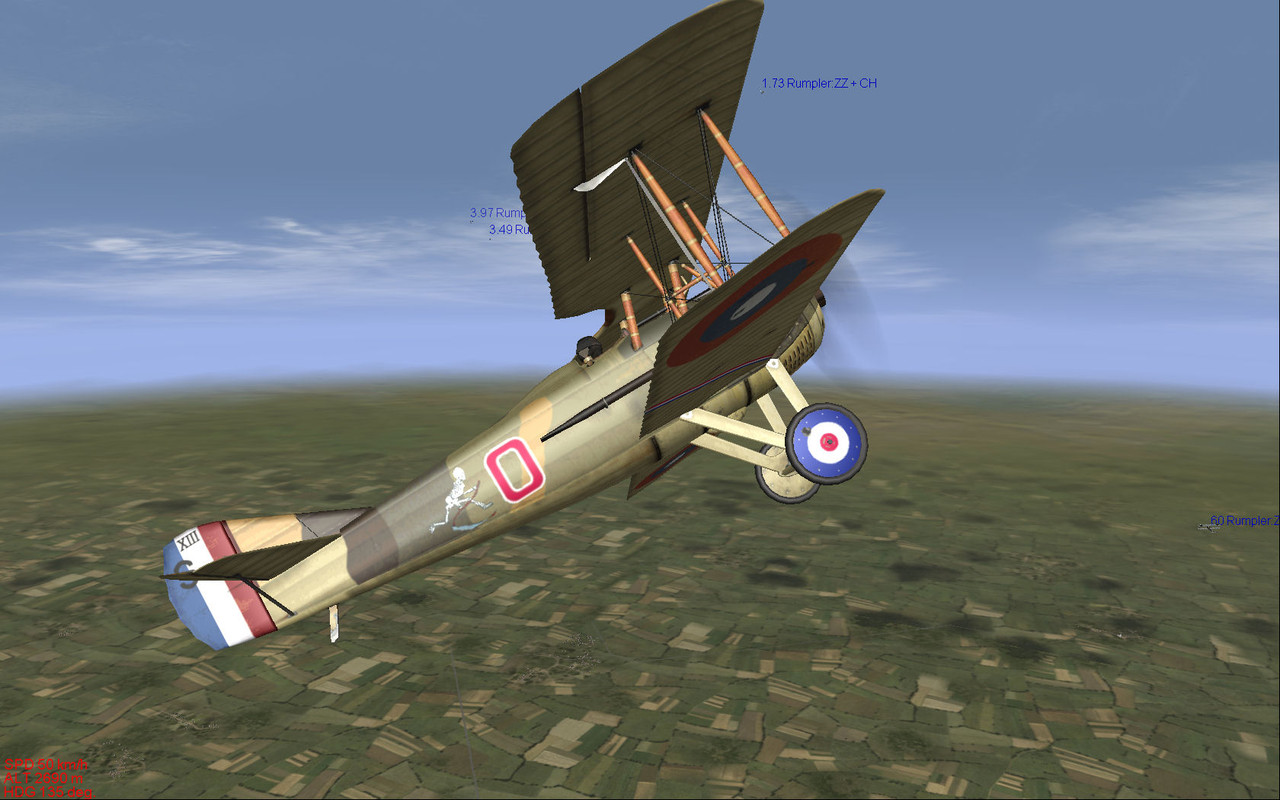

For me learning of the exploits of these men was as much fun as doing the skins. Drop these into your SPAD13 or SPAD_13b folder. Thanks to MURDOC for the great template.
Download them here:
https://www.mediafire.com/file/lmn55u2zjsn5w70/American_SPAD_XIII_Aces.rar/file Author
Topic: Some New Skins (Read 12368 times)
Author
Topic: Some New Skins (Read 12368 times)


